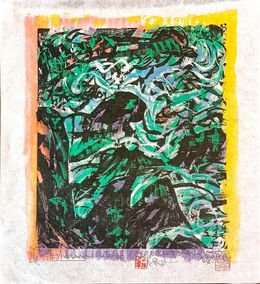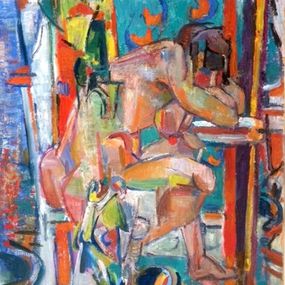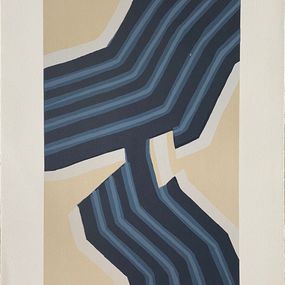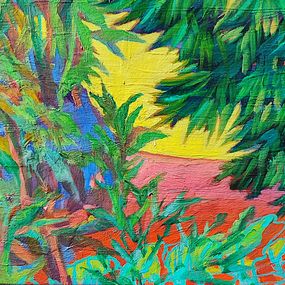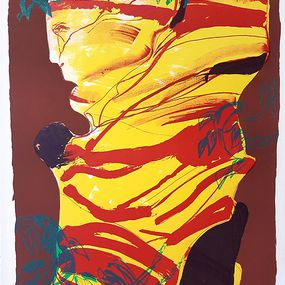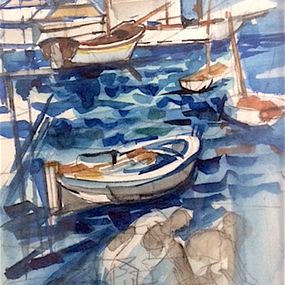
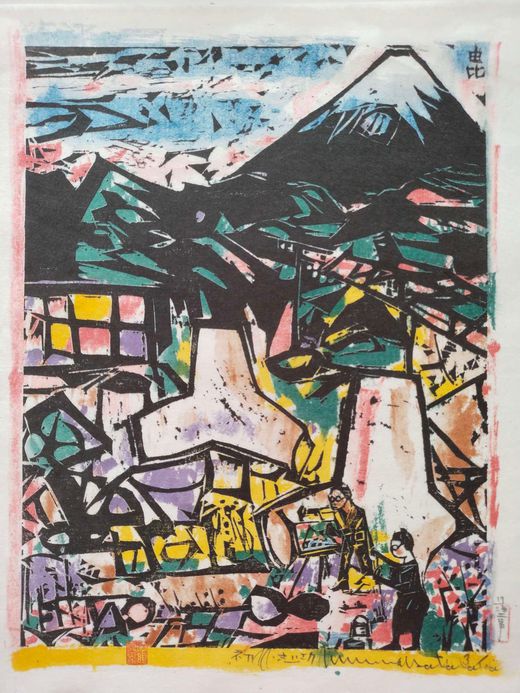
Biography
Shikō Munakata (棟方 志功, Munakata Shikō) was a 20th-century Japanese painter, born on September 5, 1903 in Aomori , died on September 13, 1975 in Tokyo.
Shikō Munakata was a printmaker and illustrator; during his childhood he helped his father at the family blacksmith's shop and then, as an office worker, he began to paint outdoors in his spare time. With friends he founded an art society to exhibit their paintings. In 1924, he left for Tokyo to study the technique of oil painting, but he rejected its uniqueness of expression. Attracted by the engravings of Kawakami (1895-1972), he then turned to woodcutting but devoted himself mainly to Buddhist themes. From 1928 he worked under the direction of Hiratsuka (1895-/).
He also published numerous albums of his woodcuts, copper engravings and lithographs, such as Kegon-fu (Chronicle of the Kegon Sūtra) and Tōhokukyo (Northeast Sūtra) in 1937, where religious concerns are apparent in his work, Uto (Birds of Woe), a set of thirty-one prints in 1938, A Collection of Shiko Munakata's Oil-Paintings in 1942, Bankyo shin, a collection of essays in 1948, Nyonin Kanzeon (Kannon) a set of woodcuts in 1949, three books entitled Hankanki, Hantanni and Ryurisho Hangakan in 1954, a new series of woodcuts, Yũzen suru Nyoshatachitachi (Women in Ecstasy) in 1955, etc. Such is the work of one of the greatest contemporary Japanese printmakers whose realistic style, tinged with naivety, close to folk art, speaks directly to the soul of his country. He himself says that he is not responsible for his work, but participates in a kind of universal creative principle, beyond good and evil and deeply rooted in reality. "The vast and limitless words express the nature of my woodcuts," he says.
Nationality
Categories
Themes




















